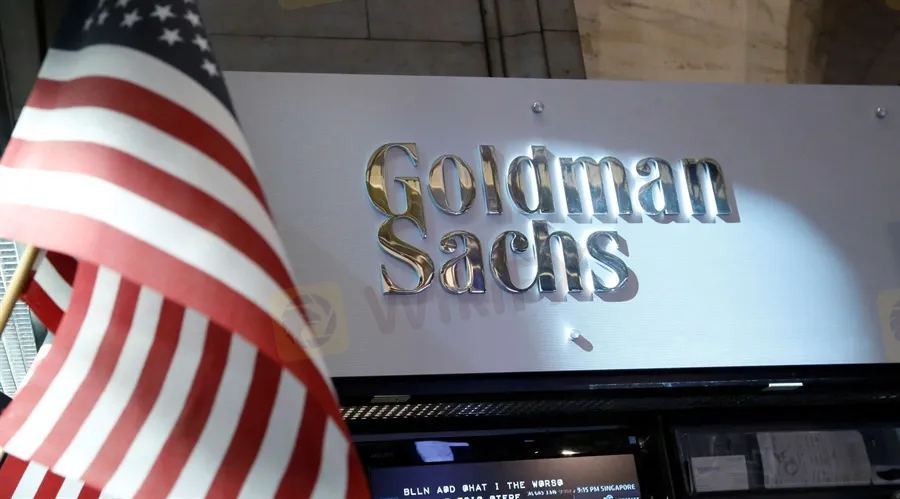简体中文
繁體中文
English
Pусский
日本語
ภาษาไทย
Tiếng Việt
Bahasa Indonesia
Español
हिन्दी
Filippiiniläinen
Français
Deutsch
Português
Türkçe
한국어
العربية
Goldman Sachs, Derivative Path to Power Global FX Payment for US Banks
Abstract:The collaboration is targeted at regional and community banks in the US. The companies' joint solution is directed at spot forex and international payments.

Goldman Sachs, a leading global financial institution, has teamed up with Derivatives Path to launch a joint solution to enable regional and community banks in the United States to access forex payments.
Take Advantage of the Biggest Financial Event in London. This year we have expanded to new verticals in Online Trading, Fintech, Digital Assets, Blockchain, and Payments.
Derivative Path provides capital market technology and derivatives execution services to regional and community banks.
According to a statement released on Thursday by Derivate Path, the partnership will leverage on the global payments network of the Goldman Sachs Transaction Banking (TxB) platform that was launched by the financial giant earlier in April.
Clients of Derivate Path will be able to use DerivateEDGE, the company's software-as-a-service-based capital market platform, to access Goldman Sachs' global payments capabilities.
DerivativeEDGE also powers forex, over-the-counter commodity and interest rate derivative transactions.
Additionally, Derivative Path in the statement explained that the collaboration will offer an automated digital-first payments solution.
The technology provider noted that this will help financial companies with spot forex and international payments.
“Using TxB's API-based platform, clients of Derivative Path now can provide a more cohesive end-to-end global payment solution to their underlying customers,” the provider explained.
Entry Barrier
Art Brieske, the Global Head of Payments for TxB, noted that regional and community banks can now enjoy a “comprehensive yet simplified and efficient cross-border payment solution.”
Pradeep Bhatia, the CEO & Co-Founder of Derivative Path, believes that the launch of the joint solution emphasizes the companys goal to drive a new wave of innovation for regional and community banks in the US.
“Teaming up with one of the world's largest and most-established financial institutions is a major step in the right direction of bringing greater technology sophistication and flexibility to the regional and community banking sector in the US,” Bhatia explained.
Goldman Sachs is a 150-year-old financial powerhouse that provides financial services in investment banking and securities.
Furthermore, it is active in the investment management and consumer banking sub-industries.

Disclaimer:
The views in this article only represent the author's personal views, and do not constitute investment advice on this platform. This platform does not guarantee the accuracy, completeness and timeliness of the information in the article, and will not be liable for any loss caused by the use of or reliance on the information in the article.
Read more

Trading Opportunities During the Lunar New Year: Forex, Commodities, Stocks
The Lunar New Year is a time for celebrations in many countries, especially in Asia. It is also a period when markets can see different trends and movements. Traders can use this time to explore new opportunities, especially in forex, commodities, and equities listed on Bursa Malaysia, the stock exchange of Malaysia.

Unlocking the Secrets of Prop Trading: How to Succeed in Proprietary Trading Firms
In this article, we’ll explore what prop trading is, the benefits and challenges it presents, and the strategies that can help you thrive in proprietary trading firms.

Top Forex Brokers for Low-Cost Trading in 2025
Find the best Forex brokers for 2025 with low spreads, zero commissions, and no hidden fees. Simplify your trading journey with insights and the WikiFX app!

Participate Now in ForexCup Trading Championship
FXOpen announced the trading competition called ForexCup Trading Championship 2025 for traders. You can join, trade, and compete for exciting prizes. Here are the details
WikiFX Broker
Latest News
Why More Traders Are Turning to Proprietary Firms for Success
Unlocking the Secrets of Prop Trading: How to Succeed in Proprietary Trading Firms
Tether’s $13B Profits in 2024 Amid UK Regulatory Scrutiny
What the Movie Margin Call Taught Traders About Risk and Timing
Top Forex Brokers for Low-Cost Trading in 2025
Participate Now in ForexCup Trading Championship
Musk team given access to sensitive federal payment system - reports
Trading Opportunities During the Lunar New Year: Forex, Commodities, Stocks
Currency Calculator






